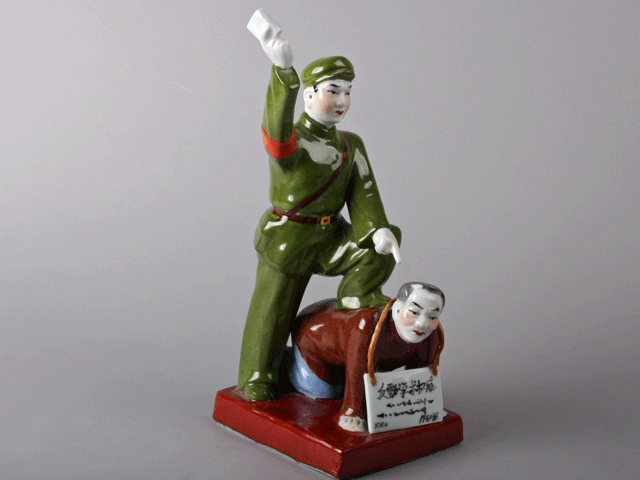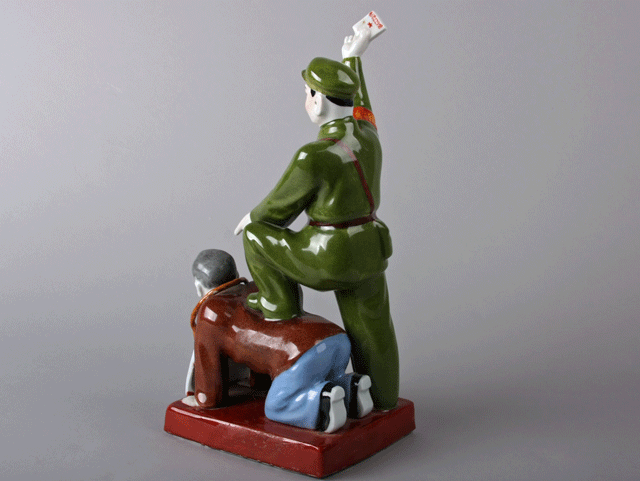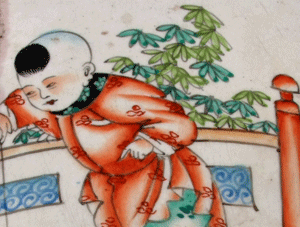
2015.38.2, polychrome ceramic statuette
Museum purchase; photo by T. Ocken

2015.38.2, polychrome ceramic statuette
Museum purchase; photo by T. Ocken
By 1966 Mao Zedong was convinced that China had drifted from the ideals of the communist revolution. In response he unleashed the "Cultural Revolution," designed to change Chinese society as thoroughly as his original revolution had changed the country politically. One of Mao's principal instruments of social change was the Red Guard, a uniformed youth organization that was allowed to use coercion as needed. This statue shows a youthful Red Guard with his foot planted on the back of an older man, a discredited intellectual. The statue is 13 1/2 inches (34 cm) tall.
During the Cultural Revolution the Red Guards sought to destroy the "four olds": old culture, old ideas, old customs, and old habits. Their activities ranged from publicly humiliating individuals (as is shown above) and forcing their removal from positions of authority, to vandalizing architecture and destroying books and ancient works of art. In less than a year the chaos caused by the Red Guards caused the communist leadership to rethink the process, and the Chinese army was called in to help suppress the Red Guards. The Cultural Revolution continued for almost another decade, however, severely damaging China's efforts to catch up with the West.
After a second view of the statue, below, we provide links to other ceramic
items relating to the Cultural Revolution.

Photo by T. Ocken

Wood box with porcelain shard lid
See source code for copyright information. Page last revised on September 30, 2015. Please report problems to toh@unm.edu